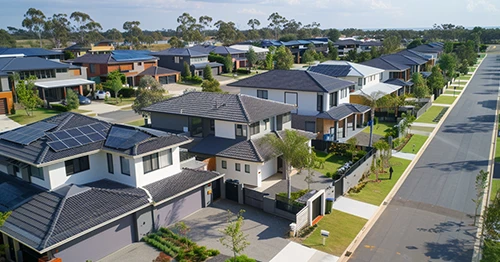Updated: 09 May, 2025
In a recent announcement, the Australian Prudential Regulation Authority (APRA) confirmed the mortgage serviceability buffer remains at 3%, following its annual update on macroprudential policy.
What Is the APRA buffer rate?
The APRA buffer rate, also known as the serviceability buffer, is a minimum additional interest rate – above the rate for the mortgage – that lenders use when assessing the ability of borrowers to repay their home loans. The buffer rate is now 3%, so to be approved for a loan with an interest rate of 5%, most banks will require that a borrower be able to make repayments based on an interest rate of 8% (3 percentage points higher). This buffer is meant to protect borrowers from financial hardship when there are future rate increases or unexpected changes to their situation.
Why did APRA maintain the buffer at 3%?
Ajar Rajbhandari, a mortgage broker at Home Loan Experts, said, “APRA maintained the buffer at 3% mainly for a safety net, to make sure people don’t borrow too much money and end up in trouble. It also looked into various factors like cost of living, what’s happening with money around the world, and whether it’s easy to find a job.”
How Does This Affect You?
Rajbhandari explained how the decision affects borrowers and refinancers:
- For people coming out of low fixed rates of 2% with no increases to income level, borrowing rates have changed massively, and servicing at a higher rate is challenging.
- For new borrowers, it usually comes down to the market situation. If the property they’re looking at is priced high, it won’t be affordable based on how much they can borrow.
But it’s not all gloom.
Rajbhandari emphasised the buffer rate can alleviate the financial strain for customers. “The buffer rate ensures that borrowers are not overextending themselves and can still afford their repayments in the face of interest rate changes or any changes to their circumstances.”
A recent report from NAB revealed that the number of people facing financial hardships rose to 44% in quarter three of 2023. The most common missed payments include electricity, gas, or water bills, phone or internet bills, and loan repayments.
How Can Home Loan Experts Help?
- We have lenders on our panel who will use a lower buffer than 3% to calculate borrowing power. We even have lenders who can use a 1% buffer for refinancers with good conduct.
- Each lender has their way of calculating serviceability, and we know lenders that can maximise it.
- By incorporating the buffer rate into your mortgage planning, you are safeguarded from unexpected changes in interest rates, economic downturns, and personal financial circumstances. A mortgage with a well-calculated buffer rate ensures that homeowners can weather fluctuations in interest rates, making homeownership more sustainable over the long term.
- The buffer rate offers flexibility and adaptability, allowing homeowners to navigate changing financial landscapes without compromising financial stability or risking default.
- We can work with your lender to negotiate better terms so you can manage your financial situation. These can include going for interest-only repayments or getting a repayment holiday.





